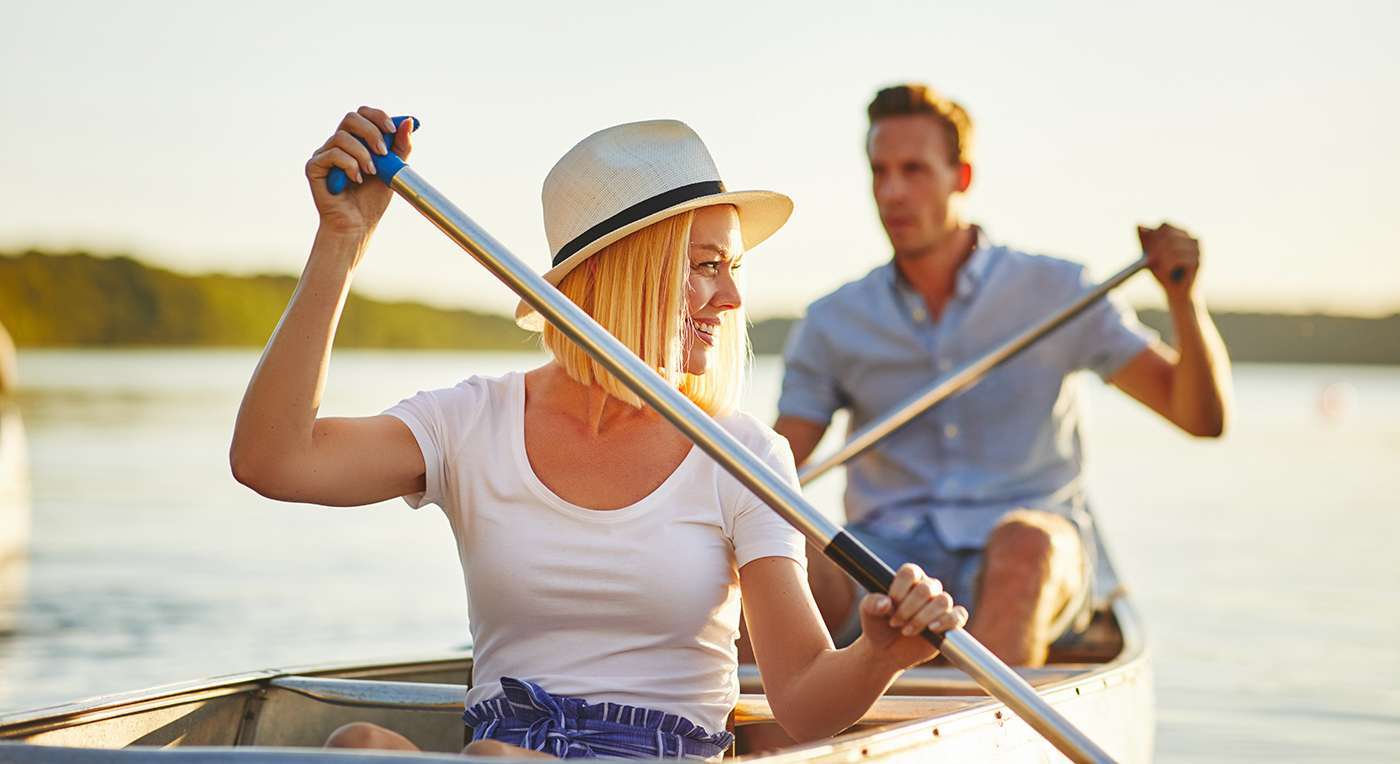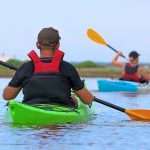Whether by kayak, canoe or raft, you can float the Missouri River from Rulo, Nebraska to St. Louis, Mo. fully in the Kansas City District.
These 498 miles of river have some of the richest viewing in our area. You will see a palette of colors. In the spring and summer, mostly shades of green. American Sycamore, Silver Maple, Box Elder and River Birch are some of the trees that line the banks. Sand bars offer an opportunity to picnic — with caution as not to disturb wildlife particularly on those marked for endangered species.
You will do well to observe safety guidelines by wearing a personal flotation device — life jacket — at all times when on and near the water. All ages should wear one to prevent drowning.
Authorities on the water include the Missouri Water Patrol and the U.S. Coast Guard with some of the lands on either side potentially being managed by the Corps of Engineers, Missouri Department of Conservation, Missouri Department of Natural Resources or the Kansas Department of Wildlife, Parks and Tourism. Most of the land is privately owned, and the land owner’s restrict public use of their lands.
Exploring the river by canoe or kayak is a great way to see parts of what Lewis and Clark may have experienced during their 1804 and 1806 travels.
The Missouri is a big and demanding river. Tips from the National Park Service to keep in mind before you go:
- Windy days can look more like a large reservoir with white-capped waves that can easily swamp a canoe/kayak.
- Be cautious! There are sandbars, snags–uprooted trees stuck in the river bottom–and other obstacles you may encounter.
- An eddy is a sure sign of an obstacle just below the water’s surface.
- The Missouri can be deep–20 feet or more in places.
- The thalweg or river channel can change depending on conditions. This ten- to twenty-foot deep channel moves, within the confines of river structures, dikes and revetments, as banks, islands, and sandbars change.
- Know your paddling ability and don’t exceed it.
You need to be prepared to move aside and let them pass. We recommend you get as far away as is safely practicable because the wake can push you into hazards or even capsize your kayak or canoe.
Access to the river is available only at public launch sites. These are few and unevenly spaced along both sides of the river.
The river current is normally between 2 and 5 miles per hour but can be higher with storm water runoff increasing flows into the river from streams and smaller rivers. Users will find paddling upstream quickly tiring and should plan for very little of that.
The wind is an issue on many days. The wider the river is, the more affected by the wind. The summer wind usually comes from the south and southwest and that, combined with the river current can make steering challenging. Wind can make reading the water depth difficult as ripples may mislead you to think the water is shallower. Only very experienced canoers should consider boating when there is strong wind. Pay attention to weather reports and plan around expected storms.
Most of the land along the river is privately owned and there are few public camping opportunities. Primitive camping is normally allowed on islands and sandbars, however, please adhere to restriction signs for nesting least terns and piping plovers. Only the water belongs to the public. In areas other than designated campsites, permission is required to walk, picnic or camp on private property. You should pack up anything you consume or bring in – leave no trash.
Sandbanks and bars provide habitat for the summer nesting of least terns and piping plovers. These are protected under the federal Endangered Species Act. Obey any signs of restricted areas so you won’t damage small chicks or eggs. Please do not disturb any nests of birds.
Zebra mussels, an unwanted invasive species in North America, are rapidly spreading in the Missouri River. Wearing swim socks or shoes will help protect your feet from cuts from shells. Clean your equipment before bringing it into the river and afterward thoroughly to prevent transmitting the mussels to uninfected areas.
It is possible to transfer the juvenile form of zebra mussels to your boat or equipment. If you have paddled other locations, please take the time to clean your equipment and boat properly prior to launching on the Missouri or its tributaries.
Consult your state water authorities for all requirements but bring insect repellent, plenty of drinking water, and an extra paddle. Some states have ages for boaters who MUST wear a life jacket when on the water. In Missouri, children under seven must wear a U.S. Coast Guard approved life vest. Using a wide-brim hat offers better shielding from the sun — remember the sun can also reflect off the water to amplify your exposure. Consider starting earlier or later on sunny and hot days.
Cautions:
- Cold water can disable the mind and body quickly.
- Dress appropriately and bring spare clothes in case you get wet. Know the symptoms of hypothermia and heat exhaustion.
- Weather on the river is very unpredictable. Wear layers and have waterproof foul weather gear handy for unexpected storms and emergencies.
- Carry a basic first aid kit in every canoe or kayak.
- Know what poison ivy and poison oak look like, as well as black widow and brown recluse spiders.
- Flying Asian Carp can be scary — they congregate in slow water behind wing dikes to eat and often become agitated by outboard motors.
- Keep tether ropes on both ends of the canoe/kayak coiled and secured to the fore and aft decks.
- Kneel in the bottom of the canoe while in areas of rough water for stability.
- Keep your head upstream, feet downstream, kick back and paddle to control your movement if you can’t stand up.
- Your canoe/kayak floats, so you can also hang onto it, remembering to stay on the upstream side.
- Water riffles mean that rocks lie close to the surface. Follow the smooth water shaped like a “V” point downstream.
- Tell someone not with you your planned put-in and take-out locations, times, expected length of trip and number in party. They can then contact authorities if you are overdue.
- Be aware cell phone coverage on the Missouri River is not always available.



